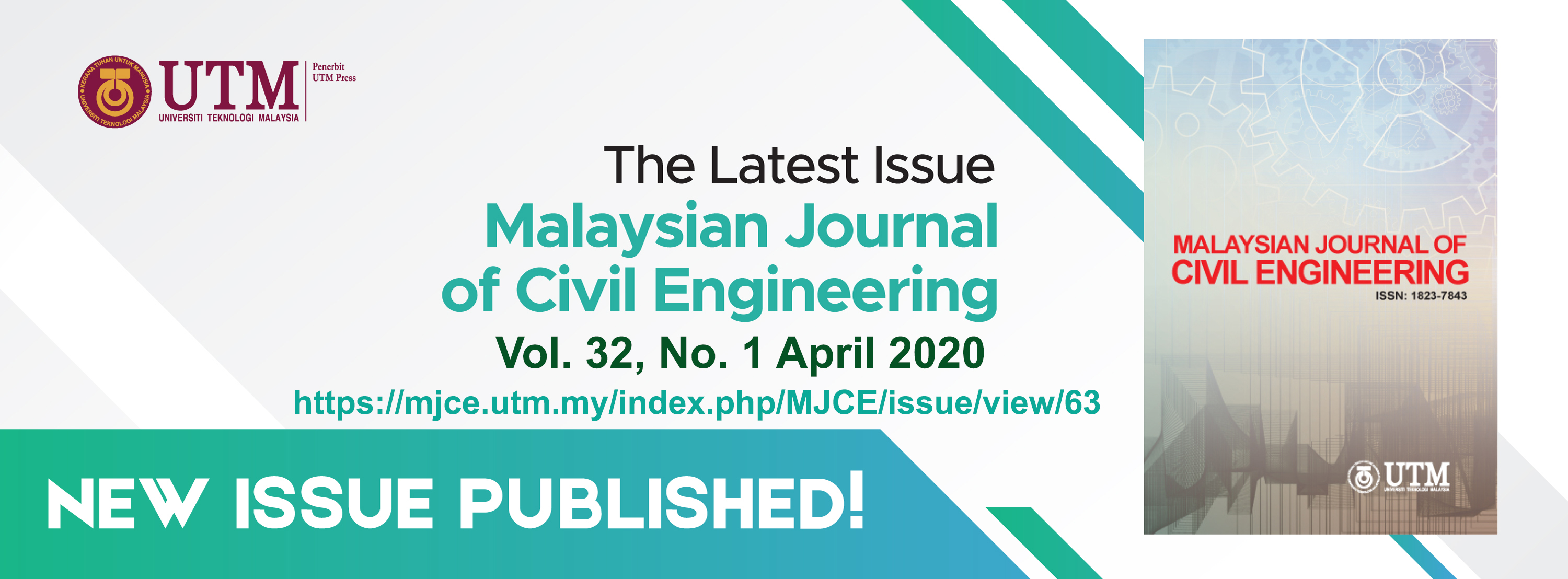SEISMIC ASSESSMENT OF EXISTING BUILDING IN BANGLADESH USING JAPANESE INDEX METHOD
DOI:
https://doi.org/10.11113/mjce.v32.16166Keywords:
Vulnerability assessment, seismic vulnerability, single building assessment, structural assessment, Japanese Index MethodAbstract
Over the years buildings are constructed in earthquake prone areas without following proper seismic design code. So the structural seismic analysis of existing buildings in the earthquake prone areas will be a prime requirement in the field of civil engineering in near future. Also the structural seismic analysis will lead to the feasibility of application of earthquake retrofitting technique in the vulnerable structures. Currently the urbanization of metropolitan cities in Bangladesh is booming rapidly leading these cities to densely populated area. In the past, there has been vulnerability assessment done for building stock on several metropolitan cities, in most cases using rapid visual screening (RVS) method. But the lacking has always been there on a detailed structural vulnerability assessment. Considering these facts a study has to be done to estimate precisely the possible damage of a building’s structure. In this study an in-depth structural seismic analysis of a medium rise building has been performed using all the 3 levels of Japanese Index Method. The Seismic Index (Is) value of the building is compared with the Seismic Demand Index (Iso) value which is 0.864 for the first level and 0.648 for the second and third level of the area to check vulnerability condition of the building structure. It is observed from this study that Japanese Index Method is developed in a way that it can be used for the seismic analysis of medium rise buildings in Bangladesh.
References
Potty N.S. and Sirajuddin M. 2011. Assessment of Building for Seismic Resistance, Malaysian Journal of Civil Engineering, 23: 86-104.
The Japan Building Disaster Prevention Association. 2001. Standard for Seismic Evaluation of Existing Reinforced Concrete Buildings. English version 1st, Building Research Institute, Japan.
Albuquerque P. 2008. Seismic Vulnerability Assessment Of Medium Rise Building Using the Index Method: the case of block #22 of the Santa Maria Hospital, Japan Meteorological Agency.
Boduroglu H.M., Ozdemir P., Ilki A., Sirin S., Demir C. and Baysan F. 2004. Towards A Modified Rapid Screening Method For Existing Medium Rise RC Buildings in Turkey, 13th World Conference on Earthquake Engineering, Vancouver, B.C., Canada, 1542.
Otani S. 2000. Seismic Vulnerability Assessment of Reinforced Concrete Buildings, Journal, Faculty of Engineering, University of Tokyo. XLVII: 5-28.
Aoyama H. 1981. A Method For The Evaluation Of The Seismic Capacity Of Existing Reinforced Concrete Building in Japan, Bulletin of the New Zealand National Society for Earthquake Engineering. 14: 105-30.
Yakut A., Ozcebe G. and Yucemen M. S. “A Statistical Procedure For The Assessment Of Seismic Performance Of Existing Reinforced Concrete Buildings in Turkeyâ€. 13th World Conference on Earthquake Engineering, 1st to 6th August, 2004, Vancouver, B.C., Canada.
Sadat M.R., Huq M.S., Ansary M.A. 2010. Seismic vulnerability assessment on buildings of Dhaka city. Journal of Civil Engineering, IEB, 38:159-72.
Bangladesh National Building Code. 2012. Housing and Building Research Institute, Mirpur, Dhaka, Bangladesh.
Sarkar J. K., Ansary M. A., Islam M. R. and Safiullah A. M. M. 2010. Potential losses for Sylhet, Bangladesh in a repeat of the 1918 Srimangal earthquake. Environmental Economics. 1: 12-31.
















